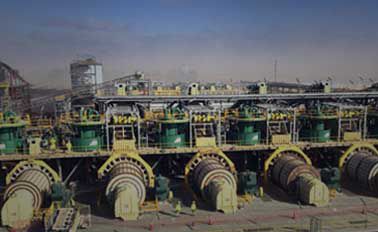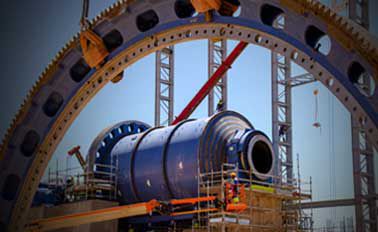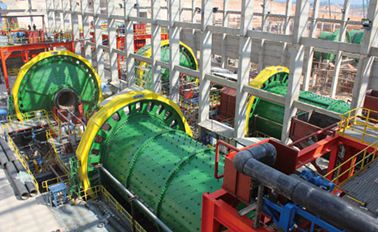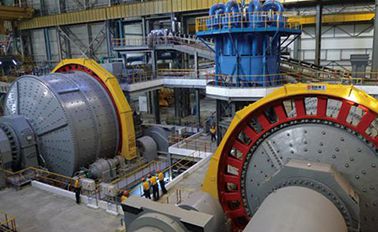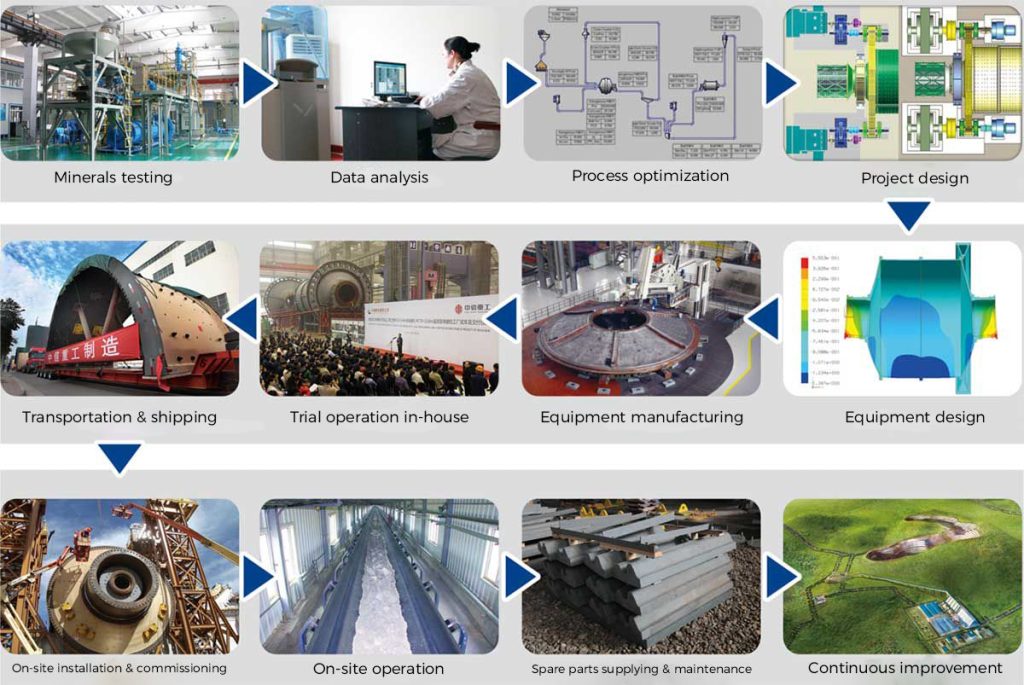1 Product Introduction
1.1 Product Overview
The XY-NSD-M-01 MEMS North Seeking Device employs a strapdown navigation solution based on integrated MEMS gyroscopes and MEMS accelerometers, capable of directly measuring the inclination and roll angles of a borehole. The XY-NSD-M-01 integrates high-performance MEMS gyroscopes and accelerometers within a compact structure. The selected gyroscopes and accelerometers represent the leading level of MEMS inertial devices. The three-axis MEMS gyroscopes sense the angular motion of the carrier, while the three-axis MEMS accelerometers sense the linear acceleration. The module compensates for zero bias, scale factor, non-orthogonality errors, and acceleration-related terms across the entire temperature range, ensuring high measurement accuracy over extended periods. The product is designed with shock-absorbing measures to ensure precise measurement of angular and linear motion parameters even in harsh environments, providing users with a low-cost, high-reliability solution.
1.2 Product Features
- High performance, small size, low weight, low power consumption
- Full temperature calibration and compensation from -45°C to +120°C
- Resistance to harsh mechanical environments
- Software online upgrade capability
- Support for automatic zero-speed correction to maintain heading accuracy
- Support for zero-bias calibration of devices
1.3 Product Composition
The XY-NSD-M-01 North Seeking Device mainly consists of a three-axis MEMS gyroscope, three-axis MEMS accelerometer, information processing circuit, navigation software, structural components, test cable, and test software. The default outputs include:
- Three-dimensional angular velocity
- Three-dimensional acceleration
- Gyroscope temperature
- Accelerometer temperature
- Three-dimensional attitude
- Three-dimensional position
- Three-dimensional velocity
1.4 Application Fields
Orientation in complex environments such as mines
2 Technical Parameters
Table 1 XY-NSD-M-01 MEMS North Seeking Device Performance Parameters
| XY-NSD-M-01 | |
| Gyroscope | |
| Parameter | Value |
| Range (°/s) | 100 |
| Zero bias (°/h) | 0.1 (1σ) |
| Bias stability (°/h, 10s smoothing) | 0.1 (1σ) |
| Bias repeatability (°/h) | 0.1 (1σ) |
| Scale factor nonlinearity (ppm) | 100 (1σ) |
| Bandwidth (Hz) | 50 |
| Bandwidth (Hz) | 50 |
| Accelerometer | |
| Range (g) | 30 |
| Zero bias (mg) | 1 (1σ) |
| Bias stability (μg) | 100 (1σ) |
| Bias repeatability (μg) | 100 (1σ) |
| Scale factor nonlinearity (ppm) | 500 (1σ) |
| Bandwidth (Hz) | 100 |
| Attitude Accuracy | |
| North seeking heading accuracy (°, 5min, 1σ) | 0.5 * sec (L) (L represents latitude) |
| North seeking horizontal attitude accuracy (°, 5min, 1σ) | 0.15 |
| Heading holding accuracy (°, 1σ) | 0.5° * h |
| Horizontal attitude holding accuracy (°, 1σ) | 0.2° * h |
| Electrical/Mechanical Interface | |
| Power supply (V) | 5 ± 0.2 |
| Power consumption (W) | ≤2 |
| Startup time (s) | ≤2 |
| Communication interface | 1 RS-422 + 1 synchronous output |
| Update rate (Hz) | 200 |
| Dimensions | Φ31.8 mm × 85 mm |
| Weight (g) | 50g |
| Operating Environment | |
| Operating temperature (℃) | -40 to 120 |
| Storage temperature (℃) | -55 to 125 |
| Vibration (g, RMS) | 6.06 |
| Shock (g) | 1000g/1ms |
3 Technical Specifications
1.5 Structural Dimensions
The system employs an aluminum alloy structure, which is lightweight and highly robust, with excellent resistance to vibration and shock. The unit’s dimensions are shown in Figure 1 below, and it is secured using six M3 screws.

Figure 1: Dimensions of the MEMS North Seeking Device
1.6 Interface Definition
The XY-NSD-M-01 MEMS North Seeking Device uses discrete wires for external output, primarily for unit power supply and communication. The connector pin definitions are shown in Table 2 below.
Table 2: Connector Pin Definitions for XY-NSD-M-01 MEMS North Seeking Device
| Pin No. | Wire Color | Definition | Function Description | Remarks |
| 1 | Red | +5V | 5V Power Supply | 600mm lead wire |
| 2 | Black | GND | Ground | 600mm lead wire |
| 3 | Purple | RS-422 T+ | Data Send+ | 600mm lead wire |
| 4 | Orange | RS-422 T- | Data Send- | 600mm lead wire |
| 5 | Yellow | RS-422 R+ | Data Receive+ | For data upload |
| 6 | Green | RS-422 R- | Data Receive- | For data upload |
| 7 | White | TOV | Data Output Pulse | For data synchronization |
4 Communication Protocol
1.7 Output Protocol
The XY-NSD-M-01 MEMS North Seeking Device defaults to broadcasting data periodically at a frequency of 200Hz. Each frame consists of 96 bytes, with a baud rate of 460,800bps. The communication format includes 1 start bit, 8 data bits, and 1 stop bit, without parity. For multi-byte variables, the lower byte is transmitted before the higher byte. The typical communication protocol is shown in Table 3 below.
The communication baud rate and output frequency can be configured by the user, with a maximum baud rate of 921,600bps and a maximum output frequency of 200Hz.
Table 3: Communication Protocol for MEMS North Seeking Device
| No. | Byte Start Index | No. of Bytes | Content | Unit | Range | Remarks | No. |
| 1. | 0 | 1 | 1 | Frame Header | – | – | 0x55 |
| 2. | 1 | 1 | 1 | Frame Header | – | – | 0xAA |
| 3. | 2 | 1 | 1 | Data Length | – | – | 92 |
| 4. | 3 | 4 | PC num | – | – | – | 5ms counter value |
| 5. | 7 | 1 | System Status | – | – | – | 16 (0x10): Self-check in progress; 18 (0x12): Self-check complete; 31 (0x1F): Self-check error;
51 (0x33): Coarse alignment; 53 (0x35): Fine alignment; 65 (0x41): Navigation; 67 (0x43): Zero-speed correction; 83 (0x53): Coarse calibration; 85 (0x55): Fine calibration; 87 (0x57): Calibration successful; 95 (0x5F): Calibration failed |
| 6. | 8 | 1 | Real-time Status | – | – | – | – |
| 7. | 9 | 1 | Over-range Status | – | – | – | After alignment, within a 5ms navigation cycle: bit0: X gyroscope over-range set to 1; bit1: Y gyroscope over-range set to 1; bit2: Z gyroscope over-range set to 1; bit3: X accelerometer over-range set to 1; bit4: Y accelerometer over-range set to 1; bit5: Z accelerometer over-range set to 1; After realignment, the above statuses are cleared. |
| 8. | 10 | 1 | Command Response Status | – | – | – | 0x10: Successful response to correct command, continuous transmission of 5 packets; 0x1F: Command error, continuous transmission of 5 packets, prompting users to check command configuration (output data or command out of range), original process remains unchanged. Note: After receiving a correct command, feedback 5 packets with 0x10 status, soft reset. After receiving an incorrect command, feedback 5 packets with 0x1F status, maintain original state. |
| 11 | 4 | Reserved Status | – | – | – | – | |
| 9. | 15 | 4 | Angular Rate X | °/s | 0.0000005 | – | Average value within the output cycle |
| 10. | 19 | 4 | Angular Rate Y | °/s | 0.0000005 | – | Average value within the output cycle |
| 11. | 23 | 4 | Angular Rate Z | °/s | 0.0000005 | – | Average value within the output cycle |
| 12. | 27 | 4 | Acceleration X | m/s² | 0.000001 | – | Average value within the output cycle |
| 13. | 31 | 4 | Acceleration Y | m/s² | 0.000001 | – | Average value within the output cycle |
| 14. | 35 | 4 | Acceleration Z | m/s² | 0.000001 | – | Average value within the output cycle |
| 15. | 39 | 4 | Combined Longitude | ° | 0.0000001 | – | Instantaneous value at output moment |
| 16. | 43 | 4 | Combined Latitude | ° | 0.0000001 | – | Instantaneous value at output moment |
| 17. | 47 | 2 | Combined Altitude | m | 0.5 | – | Instantaneous value at output moment |
| 18. | 49 | 2 | Combined North Velocity | m/s | 0.04 | – | Instantaneous value at output moment |
| 19. | 51 | 2 | Combined Sky Velocity | m/s | 0.04 | – | Instantaneous value at output moment |
| 20. | 53 | 2 | Combined East Velocity | m/s | 0.04 | – | Instantaneous value at output moment |
| 21. | 55 | 2 | Roll Angle | ° | 0.006 | [-180~180] | Instantaneous value at output moment |
| 22. | 57 | 2 | Heading Angle | ° | 0.006 | [0,360] | Positive from North to East, instantaneous value at output moment |
| 23. | 59 | 2 | Pitch Angle | ° | 0.006 | [-90,90] | Instantaneous value at output moment |
| 24. | 61 | 1 | Gyroscope Temperature | °C | 1 | – | Instantaneous value at output moment |
| 25. | 62 | 1 | Accelerometer Temperature | °C | 1 | – | Instantaneous value at output moment |
| 26. | 63 | 4 | Quaternion q0 | – | – | – | Based on North-East-Sky coordinate system, IEEE2 floating-point, little-endian |
| 27. | 67 | 4 | Quaternion q1 | – | – | – | Same as above |
| 28. | 71 | 4 | Quaternion q2 | – | – | – | Same as above |
| 29. | 75 | 4 | Quaternion q3 | – | – | – | Same as above |
| 30. | 79 | 1 | X Gyroscope Over-range Counter | – | – | – | If the angular velocity value exceeds 200°/s in a 5ms navigation cycle, increment by 1. Reset to 0 after reaching 255. Re-count after realignment. |
| 31. | 80 | 1 | Y Gyroscope Over-range Counter | – | – | – | Same as above |
| 32. | 81 | 1 | Z Gyroscope Over-range Counter | – | – | – | Same as above |
| 33. | 82 | 1 | X Accelerometer Over-range Counter | – | – | – | If the acceleration value exceeds 20g in a 5ms navigation cycle, increment by 1. Reset to 0 after reaching 255. Re-count after realignment. |
| 34. | 83 | 1 | Y Accelerometer Over-range Counter | – | – | – | Same as above |
| 35. | 84 | 1 | Z Accelerometer Over-range Counter | – | – | – | Same as above |
| 36. | 85 | 1 | Horizontal Correction Count | – | – | – | – |
| 37. | 86 | 1 | Heading Correction Count | – | – | – | – |
| 38. | 87 | 4 | Reserved 7 | – | – | – | – |
| 39. | 91 | 4 | Reserved 8 | – | – | – | – |
| 40. | 95 | 1 | Checksum | – | – | – | Low 8 bits of the sum of bytes from index 2 to 94 |
5 5. Product Usage Instructions
5.1 Product Connection and Usage Precautions
- The system uses an RS422 interface and does not support RS485, RS232, or TTL communication.

Figure 3: RS422 Interface Diagram
- The system has specific axis orientation requirements. Before use, ensure that the installation axis orientation is correct. The X-axis is the roll axis, the Z-axis is the pitch axis, and the Y-axis is the heading axis.
Figure 4: Attitude Schematic Diagram

- Do not perform rapid power-on and power-off tests on the north seeking device. There should be an interval of more than 10 seconds between power-off and power-on. Since the system contains micro-mechanical vibrating components, rapid power cycling can cause internal damage. If damage occurs due to rapid power cycling, the user will be responsible.
- The north seeking device requires a static state during the north seeking phase. Non-static conditions will result in significant north seeking errors.
- During the navigation phase, do not exceed the gyroscope’s range. The north seeking gyroscope has a small range, and exceeding it will result in inaccurate attitude integration. Pay attention to the over-range status word during use. If over-range occurs, re-north seeking is required.
5.2 North Seeking Function
- Product Installation
Before using the north seeking device, ensure that the product axis orientation matches the required orientation. Align the device’s X-axis with the desired direction and securely attach the bottom of the device to the measurement surface. Tighten the installation screws and connect the device cables in preparation for measurement.
- Configure Longitude and Latitude
The device requires local latitude configuration for proper operation.
- Start North Seeking
After configuring the longitude and latitude, power on the device with a stable voltage of 5V ± 5%. The device will automatically enter the north seeking mode after self-check. The north seeking process includes coarse alignment and fine alignment stages. When the device status word is 51, the device is in the coarse alignment stage; when the status word is 53, it is in the fine alignment stage. Once the device enters the fine alignment stage, the attitude is initially available with a heading accuracy of approximately 5° and a horizontal attitude accuracy of around 1°. After fine alignment is complete, the device reaches its normal north seeking accuracy, achieving the highest precision.
- Start Navigation
When the device status word is 65 or higher, the device enters navigation mode, switching to inertial navigation mode. The attitude accuracy will gradually decrease over time. During navigation, exceeding the range will result in incorrect navigation attitude. Avoid using the device in such conditions.


